A Brief Overview of Training Methods for Dogs

If you’re new to dog training, you may feel lost choosing a proper method. The end goal of the process is to raise a well-behaved, confident, and competent companion. Is it possible to achieve this without negatively impacting your human-canine bond?
Let’s investigate what dog training methods work best and provide a stimulating and nurturing environment for your furry companion to grow in.
What Do Methods of Dog Training Rely On?
Dog training methods rely on the principles of operant and classical conditioning. Operant conditioning includes four "quadrants" that shape behavior. It consists of receiving specific desirable or undesirable consequences after a voluntary action.
Classical conditioning is a learning process in which the dog makes an association between two stimuli, and it’s often used in training to create positive associations or to change emotional responses.
Let’s discuss these four "quadrants” below.
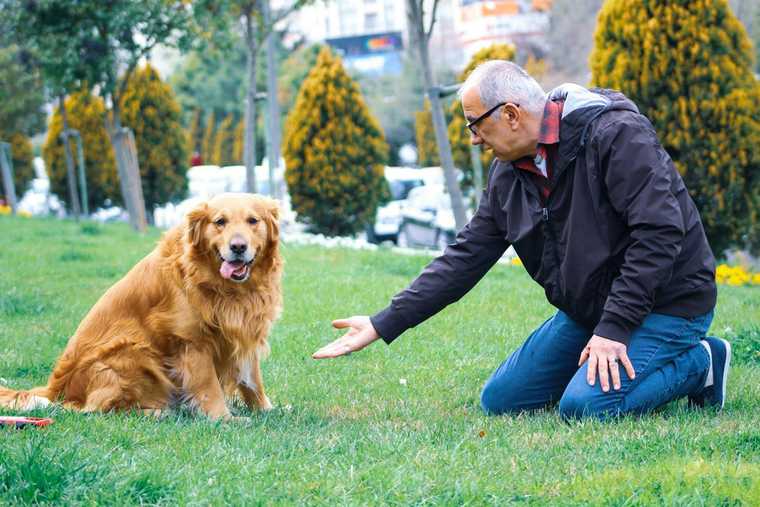
Training methods for dogs use:
-
Positive reinforcement: A trainer rewards a canine for good behavior, which teaches them that specific actions lead to praise and treats. They start recreating desired behavior to earn the reward.
-
Negative reinforcement: A trainer introduces negative consequences for specific behavior. This consequence is removed when the canine stays away from the unwanted behavior.
-
Positive punishment: A trainer reacts to unwanted behavior by giving a bad consequence. The canine associates the behavior with punishment and stops demonstrating it to avoid negative consequences.
-
Negative punishment: When a canine performs undesired actions, a trainer deprives them of positive consequences (like interacting with an owner). The dog reduces or stops the behavior because they don’t get positive outcomes.

Note: Regarding canine operant conditioning, “punishment” doesn’t refer specifically to physically abusive methods. It’s instead the term describing the connection between behaviors and the consequences they bring.
A "punisher" and a "reinforcer" are viewed from a learner’s perspective. For example, tennis balls can be a great reinforcer for a canine learner who loves to play fetch. For another dog that's scared of tennis balls, they would be a punisher.
Types of Dog Training Methods
There are many dog training styles and methods to choose from. Some are more traditional, while others take advantage of recent science-based discoveries in canine psychology. Let’s review the philosophy behind each and the possible pros and cons of each training type.
Positive reinforcement
Positive reinforcement, or “force-free,” is one of the most popular training styles and one that is backed by the American Veterinary Society of Animal Behavior. It focuses on reinforcing desired behaviors using treats, toys, and other rewards. As a result, your pet builds positive associations with specific actions, which increases the likelihood of recreating these behaviors.
The approach is famous for being canine-oriented, humane, and ethical. Positive reinforcement training isn’t stressful and doesn’t harm the relationship between a canine and their owner. However, a trainer must be mindful of their dog’s body language and adjust the plan if there is any discomfort.
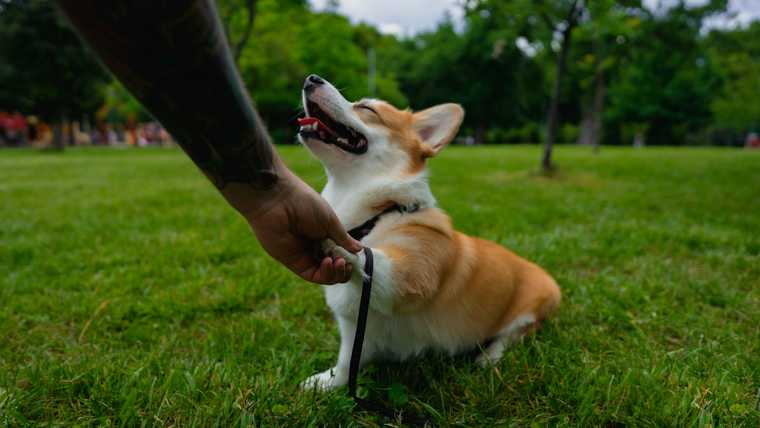
Pros:
- ethical and humane
- backed up by scientific evidence
- reduces the chances of behavioral problems
- helps create a strong bond between a canine and owner
- boosts the dog’s confidence
Cons:
- a dog may become too food-focused if the trainer can’t properly fade treats and switch to a “variable reinforcement schedule”
- an owner/trainer should stay committed to short but frequent and consistent sessions, as the progress can be slow
Balanced
Balanced training is a dog training approach that combines all four operant conditioning "quadrants" – positive reinforcement, negative reinforcement, positive punishment, and negative punishment.
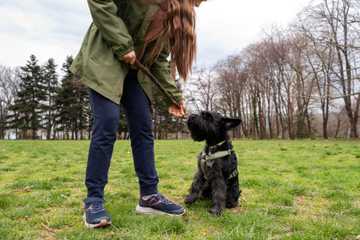
A balanced trainer may use rewards like treats, praise, or play to encourage good behavior while using corrections such as leash pressure, verbal reprimands, or tools like prong collars or e-collars to deter unwanted behaviors.
While balanced training advocates cite certain "pros," modern, science-based training techniques have largely disproven these claims.
Claim #1: "Balanced training provides clear feedback on wanted and unwanted behaviors"
Modern training disproves this: Positive reinforcement-based training also provides clear feedback – without the need for punishment. Instead of telling a dog what not to do, it teaches them what to do and puts them in situations that slowly increase in difficulty based on their success rate. Rewarding desired behaviors makes learning faster and more reliable, as dogs are more likely to repeat behaviors that earn them something good.
Claim #2: "It can produce quick results"
Modern training disproves this: While punishment can sometimes suppress behavior quickly, it doesn’t teach the dog an alternative behavior. This leads to temporary fixes rather than long-term learning. Commonly, behavior will only be suppressed for so long before resurfacing in worse ways. Reward-based training may take more patience, but it results in consistent, lasting behaviors without fear or confusion.
Claim #3: "Balanced training allows for a range of tools and techniques"
Modern training disproves the need for this: The use of aversive tools (e.g., prong collars, shock collars) is unnecessary and outdated. Studies show that reward-based training alone is just as effective – if not more – at teaching obedience while also fostering trust and confidence in the dog. This applies to recall and off-leash control, too!
Claim #4: "Corrections help dogs understand boundaries"
Modern training disproves this: Dogs learn boundaries just as well (or better) with positive reinforcement.

For example, instead of using leash corrections for pulling, reward-based training teaches loose-leash walking by reinforcing calm behavior. Science shows that positive reinforcement leads to faster learning and better behavior retention without the risks of fear or stress.
Note: In the past, the correction-based approach, which used behavior correction and punishment to modify a canine’s behavior, was widespread. At the core of the strategy is the false and outdated idea of “alpha” status in the pack, which the owner reinforces by setting a hierarchy with the canine. This approach is no longer used because it has been proven that this hierarchy has never existed between humans and canines!
LIMA Training Principles
One of the canine and puppy training methods that is becoming outdated, too, is the LIMA (Least Intrusive, Minimally Aversive) approach. The LIMA philosophy focuses on positive reinforcement and the absence or minimal use of aversive methods in canine training. LIMA trainers consider a canine student’s temper and individual preferences to make the sessions efficient.
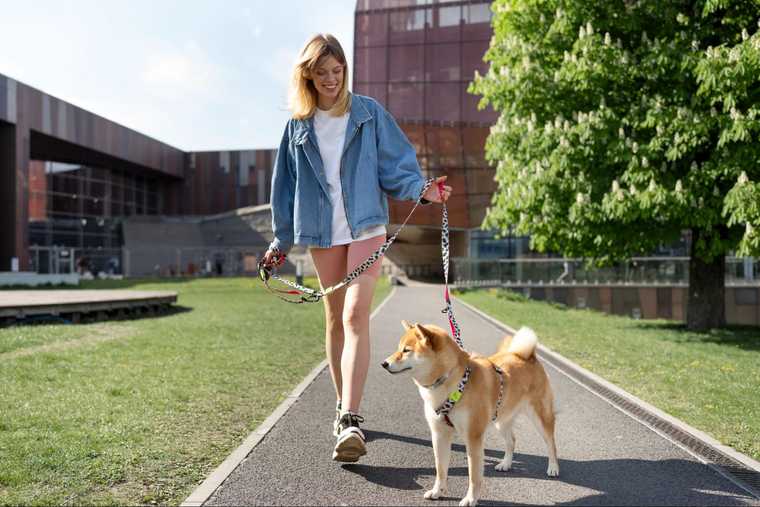
LIMA principles:
-
Strengthen a human-canine bond: Make the training sessions enjoyable to build trust with your dog, making them more likely to follow your commands.
-
Focus on emotional well-being: Use positive reinforcement techniques to avoid evoking fear, stress, or anxiety.
-
Aim for long-term benefits: Encourage your thinking, problem-solving, and choices based on desire, not fear. This approach will help you develop a confident and obedient dog.
-
Use ethical approaches: Recognize the value of each dog’s individuality and promote respectful approaches.

Other Dog Training Techniques
Once you teach your pooch new tricks and commands using reward-based methods, you have to choose a specific technique to reinforce particular behaviors. Animal behavior consultants suggest choosing between capturing, luring, or shaping. The choice depends on the nature of the behavior you want to train.
Capturing
This approach is practical for reinforcing natural behaviors, such as yawning, sitting down, stretching, etc. A trainer notices the moment the canine student performs a desired behavior naturally. At this point, they mark the behavior (you can use a clicker for this purpose), name it, and reward a dog with a treat.

After a while, your companion will associate the verbal cue you use with a particular trick and a reward. It will motivate them to act this way upon your cue to earn a treat. However, this approach has some limitations, as it applies only to the behaviors your dog tends to do naturally.
Pros:
- effective
- ethical
- mentally stimulating
Cons:
- requires a lot of time and watching the dog closely to catch the behaviors
- applicable only to particular behaviors
Shaping
Shaping works best for teaching tricks and providing mental stimulation for your companion. It consists of breaking down a desired behavior and gradually teaching a dog to do it. This technique requires careful planning and constant rewards for completing each step in the plan.
To “shape” a rollover:
Step 1: Start with the dog in a down position
Step 2: Encourage the dog to shift weight to one side
Step 3: Add more body movement by luring them halfway through a roll
Step 4: Roll all the way over
Step 5: Add a cue

Pros:
- effective
- ethical
- mentally stimulating
Cons:
- requires a solid background in training
- dog needs to be motivated by the reward
Luring
Luring is one of the most popular dog training methods. It works well for food-motivated canines as you use a treat to make them follow your hand and change their body position to reach the lure. Inexperienced dog owners typically start with luring as it’s fast and effective.
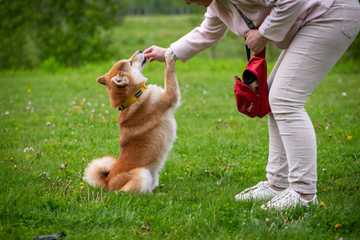
It’s essential to work on adding a verbal command while teaching the behavior. The next step is to fade the lure so that the dog starts following the verbal cue only.
Pros:
- quick and effective
- ethical
- works great for new dog parents
Cons:
- a dog may become food-dependent if not properly done, so the lure can be difficult to remove
What Methods of Dog Training Should You Use?
Years of research on canine psychology, behavioral patterns, and motivation have shown that positive reinforcement and force-free approaches have the best results. There’s no scientific evidence proving the effectiveness of punishment over reward-based techniques. Positive reinforcement is also beneficial for your dog’s emotional well-being and helps make your relationship better.
A common misconception about positive reinforcement is that it doesn’t help modify unwanted behaviors. In reality, you can use verbal responses like a quick “No” or body blocking to let your dog know they need to try a different behavior. Such forms of correction are humane and effective. They don’t seem threatening and set clear boundaries.

Wrap Up
Training styles vary depending on the methods used to influence a dog’s behavior. We strongly support the idea of using only ethical methods. Such methods provide a strong foundation for your dog’s confidence and prevent behavioral problems in the future.

Passionate team dedicated to help pet owners raise safe and obedient dogs, fostering meaningful connections with their furry companions.